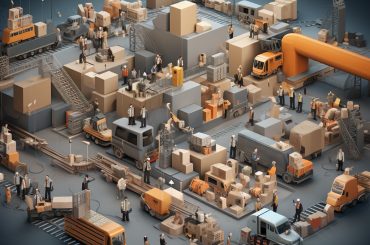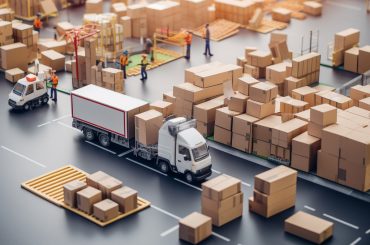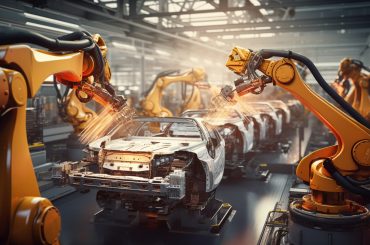To extend the shelf-life of food products, regular cleaning and disinfection of any equipment are essential. This helps in preventing microbial growth in the product. Cleaning can be done automatically or by using manual processes. But to increase the efficiency of the industries, automatic cleaning of the equipment is necessary.
This article guides understanding the automatic cleaning of food manufacturing facilities. It will also guide you on why you should give up on manual equipment cleaning and automate your cleaning process.
Automated Cleaning
There is a worldwide focus on food waste and ways to lessen it.
The food industry, currently one of the biggest industries, has to incorporate the latest techniques and tools.
Some cleaning techniques have also been part of such a vast industry. For years, manual cleaning of the equipment has been the center of focus for food industries. But now, food industries realize the importance of letting go of such manual practices.
To clean every surface well, you must incorporate an automatic solution on your processing equipment. This means that every single surface, as well as the peripheral areas and ‘dark spots’, is cleaned during each cleaning cycle.
Why Manual cleaning is a Big No in the Food industry
Manual cleaning of the equipment has been in practice for many years. Although very useful, it is still a good time for you to give up on manual cleaning and incorporate automated cleaning in your food industry.
Manual cleaning is done using cloths, mops, brushes, pads, etc. It is normally used in small equipment that is non-waterproof. Equipment that requires dismantling or areas which are difficult to clean by other methods also uses manual cleaning.
Manual cleaning is a labour-intensive method.
It may also restrict the use of certain chemicals for safety reasons.
To ensure cleaning is effective, you need to train the staff properly. Without adequate training, staff and workers can not start the cleaning procedure.
Possibility of committing mistakes
When it comes to manual cleaning of the equipment, there is a likelihood of making mistakes. Good cleaning reduces contamination. But when done manually, chances are the workers may make a few mistakes. They may miss some parts of the equipment. They may not clean the equipment regularly. They may not be aware of the protocols to be followed while cleaning the equipment.
Therefore, manual cleaning highly increases the possibility of mistakes. Such mistakes may result in serious health complications for consumers.
Technological advancements
This point might be self-explanatory for most of you. The current era of technological advancements has made everything easy. Everything these days is automated. Food industries as well, keeping pace with such technological advancements, have incorporated automated cleaning procedures rather than sticking with the old manual cleaning tools.
A time-consuming procedure
Manual cleaning of the equipment is a time-consuming process. Manual equipment cleaning is done using cloths, mops, brushes and pads, which relatively takes a lot of time to complete the cleaning process.
Compromise on the food quality
When most of the time is spent on the cleaning process, less time is spent on enhancing productivity. With automated cleaning, less time needs to be given to the cleaning process, and more time is spared for focusing on the quality of the products. This automated cleaning enhanced the product quality.
Increased risk of recontamination
Manual cleaning may miss out on certain spots in the equipment. Incomplete decontamination can thus result in chances of recontamination by bacteria or other organisms.
Increased labor and high costs
One needs to pay the workers to clean the equipment. Manual cleaning can cost you more. So manual cleaning is not a cost-effective procedure.
The need for manual cleaning limited the development of new processes and ideas.
These disadvantages of manual cleaning should be enough for you to consider letting go of manual cleaning practices and adopting automated cleaning techniques.
Benefits of Automated Cleaning in Food Industries
If you own a food industry and are currently using manual practices to clean the equipment, you may have heard of automated cleaning. In addition, by now, you may have also thought of incorporating automated cleaning into your food industry. But you must be thinking, what benefits do I get? How does automated cleaning benefit my food business?
Don’t worry because up next, we are about to discuss the benefits of automated cleaning in food industries.
Food safety and hygiene
- By choosing automated cleaning of equipment, you optimize food safety and hygiene
Reduced Cleaning time
- Automated cleaning reduces the cleaning time. This leads to increased production time. Consequently, you get increased output.
Cost-effectiveness
- Automated cleaning reduces the amount of water used. It also reduces chemical consumption and overall operational costs.
Employee safety
- Automated cleaning ensures increased employee safety.
Extended shelf-life of products
- By choosing automated cleaning, you can extend the shelf-life of products.
Ease of use
- Automated systems, like any other advanced technological product, are easy to use. These automated cleaning tools can be used without knowing everything about it. All you need to do is to train your staff to use the automated devices. And you are good to go.
Reduced waste
- Automated cleaning requires minimal to zero water consumption. There is also less risk of spillage of waste materials that could further contaminate the environment. This automated cleaning produces minimal to no waste, ensuring the safety of the environment in addition to food safety.
Accuracy
- Automated devices are used for cleaning work for the required period to decontaminate the environment and the equipment effectively. Unlike manual cleaning, where the contact time between disinfectant and the contaminated surface during manual cleaning is not always accurately performed.
Conclusion
So, in a nutshell, manual equipment cleaning has been paid attention to for quite a long time. It is finally the time to take a step ahead and incorporate automated cleaning practices in your food industry. The vast majority of the population served by the food industries demands cost-effective and productive strategies to be implemented. No doubt, automated cleaning is one of the finest advancements made in the food industry. With all the benefits mentioned above of automated cleaning, it would not be wrong to let go of manual cleaning.





